Is Your Vietnam Factory Struggling with warehouse space constraints and fast-growing exports? Try a Pallet Changing Machine
Your factory in Vietnam is a success story. Orders are pouring in, and your export numbers are climbing faster than you ever imagined. But this growth comes with a serious headache. Your warehouse is packed to the ceiling. Every aisle is a chaotic maze of goods, forklifts, and workers. You are losing precious time and money just moving products around, and the pressure to meet shipping deadlines is constant. This logistical bottleneck is a silent growth killer. It increases the risk of product damage, drives up labor costs, and puts your reputation for timely delivery at risk. What if you could solve this problem with one strategic investment? A pallet changing machine could be the key to unlocking your factory's true potential.
A pallet changing machine directly tackles warehouse space constraints and export bottlenecks in fast-growing factories, like those in Vietnam. It allows for the rapid, automated transfer of goods from internal pallets to shipping-specific pallets. This single action eliminates the need for large manual restacking areas, freeing up valuable floor space. It also dramatically cuts down the time required to prepare goods for shipment, ensuring containers are loaded faster and export deadlines are met consistently.
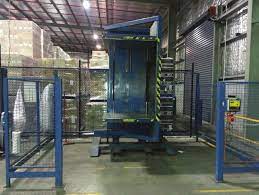
I know what you might be thinking. "It's just another machine. How can it fundamentally change my operations?" I've been in your shoes. As an engineer and later a factory owner, I learned that the simplest solutions are often the most powerful. The impact of a pallet changer goes far beyond just swapping pallets. It's about optimizing your entire workflow from the production line to the shipping container. Let's break down how this machine can become a strategic asset for your growing business.
How can a pallet changer improve warehouse space utilization?
You walk through your warehouse and see it everywhere. Aisles are cluttered with pallets waiting to be processed. You have entire zones dedicated to the slow, manual process of restacking goods from your durable in-house pallets to cheaper, one-way export pallets. This wasted space is a hidden cost that eats into your profits every single day. Every square meter used for this inefficient task is a square meter you cannot use for storing more products or even adding a new production line. This forces you to consider expensive solutions like renting off-site storage, all because of a logistical bottleneck. A pallet changer offers a direct solution. It creates a compact, highly efficient, and dedicated station for this task, freeing up huge areas of floor space for activities that actually make you money.
A pallet changer improves warehouse space utilization by consolidating the entire pallet swapping process into a single, small-footprint machine. It completely removes the need for large, chaotic manual restacking zones. This allows you to use that valuable reclaimed floor space for what it's meant for: adding more storage racks, expanding production, or creating a smoother traffic flow, ultimately increasing your warehouse's capacity and efficiency without costly physical expansion.
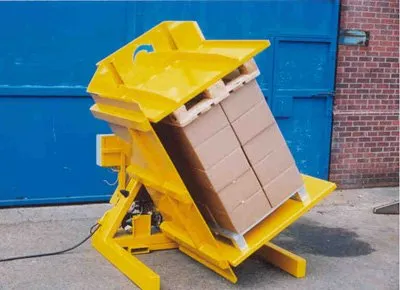
Dive Deeper: Reclaiming Your Wasted Space
Let's get specific about how much space you are actually losing. The problem isn't just the one pallet being re-stacked. It is the entire ecosystem of inefficiency that grows around the manual process.
The "Hidden" Space Eaters in Your Warehouse
Think about the manual process. First, a forklift brings a pallet of finished goods from your main storage area and drops it in a designated "inbound" staging zone. Then, workers need space to place an empty export pallet next to it. They need room to move around as they lift and transfer goods. This creates a temporary, but constantly present, work area that can easily consume 20 to 30 square meters. You also need separate storage areas for your stacks of expensive house pallets and your stacks of cheaper export pallets. This entire operation is dispersed and messy.
A Direct Comparison: Manual vs. Automated
A pallet changer transforms this chaos into a streamlined, centralized operation. The machine itself has a compact footprint, often no more than 10 square meters. A forklift brings the pallet directly to the machine. The operator pushes a button. In 90 seconds, the load is on the new pallet, and the old pallet is neatly stacked by an integrated pallet dispenser. The process is contained, predictable, and incredibly space-efficient.
Let's visualize the difference in a table.
| Feature | Manual Pallet Swapping | Pallet Changer Machine |
|---|---|---|
| Required Floor Space | 20-30 sq. meters (for staging & work area) | 5-10 sq. meters (machine footprint) |
| Process Flow | Dispersed and chaotic | Centralized and streamlined |
| Empty Pallet Storage | Requires separate, large floor areas | Can be integrated with compact pallet dispensers |
| Potential Space Reclaimed | 0 sq. meters | 15-20 sq. meters per station |
My Personal Experience
I remember a client, the owner of a fast-growing steel wire factory. His warehouse was at its breaking point. He was days away from signing a lease on a new, very expensive off-site warehouse. He felt he had no other choice. I asked him to walk me through his outbound process. I timed how long it took and measured the space they used just to switch pallets for their export orders. We calculated that two pallet changers would free up nearly 50 square meters of prime floor space. More importantly, it would streamline his process so much that he could increase his storage density. He invested in the machines instead of the lease. Six months later, he told me it was the best capital decision he'd made all year. He didn't just save on rent; he made his entire operation more profitable.
Can a pallet changer truly speed up my export process?
You see it every day. A container arrives, and the truck driver starts the clock. But your shipment isn't ready. Your team is scrambling on the warehouse floor, manually moving heavy boxes or coils from one pallet to another. This process is slow, labor-intensive, and a major bottleneck. These delays are more than just frustrating. They can lead to missed shipping cut-offs, angry customers, and expensive detention fees charged by the trucking companies. Every minute a truck sits idle at your loading dock is a minute your product is not moving towards your customer. This critical delay ripples backward through your entire operation, slowing everything down and damaging your reputation as a reliable supplier. But there is a way to fix this. A pallet changer automates this crucial step, turning a 30-minute task into a 90-second one, ensuring your shipments are ready and waiting when the truck arrives.
Yes, a pallet changer dramatically speeds up the entire export process. It automates the transfer of goods from your internal "house" pallets to export-compliant pallets, such as ISPM 15 treated wood or plastic slip-sheets. This reduces the time it takes to handle one pallet from 20-30 minutes of manual labor down to less than two minutes. This simple change eliminates the biggest bottleneck at your loading dock and ensures a faster, more predictable shipping schedule.
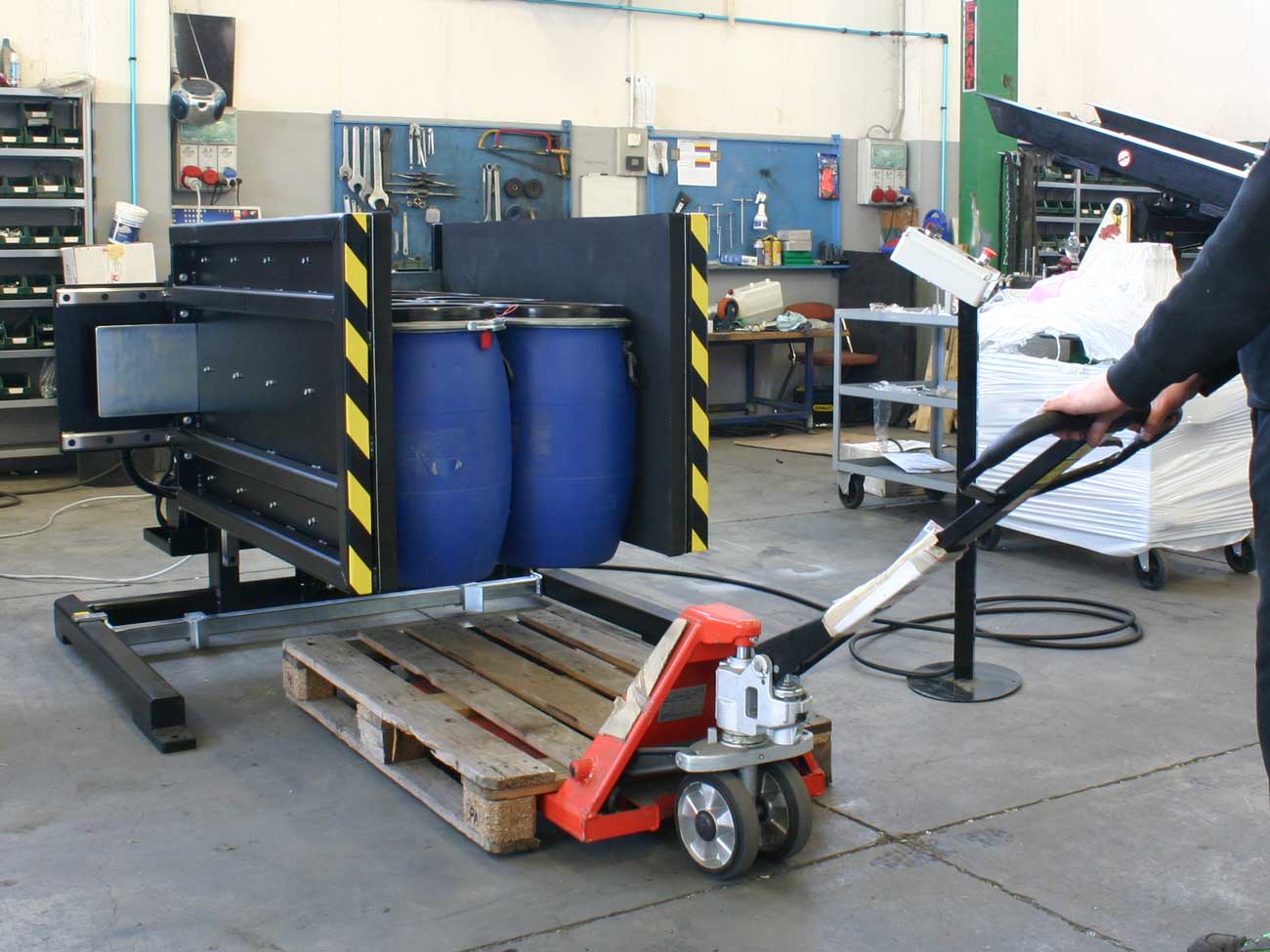
Dive Deeper: From Bottleneck to Superhighway
To understand the impact, we need to map out the journey of your goods from the shelf to the ship. The slowest part of that journey is almost always the final preparation at the loading dock.
Pinpointing the Outbound Bottleneck
Your standard outbound process probably looks like this:
- Order Picking: A forklift retrieves the correct pallet from the storage racks. (Relatively fast)
- Staging: The pallet is brought to a staging area near the loading dock. (Fast)
- Pallet Swapping: Two or three workers manually move the entire contents of the pallet to an export pallet. (Extremely slow and unpredictable)
- Loading: The new pallet is loaded into the container. (Relatively fast)
Step 3 is the problem. It's inconsistent. The time it takes depends on the product's weight, shape, and how careful the workers need to be. It's a manual, variable process in an otherwise mechanical and predictable system. This is what a pallet changer is designed to fix. It makes Step 3 as fast and reliable as all the other steps.
Quantifying the Time Savings
The numbers speak for themselves. Let's compare the process of getting a 20-pallet container ready for export.
| Metric | Manual Process | With Pallet Changer | Improvement |
|---|---|---|---|
| Time per Pallet | 20-30 minutes | 1.5 minutes (90 seconds) | ~95% Reduction |
| Labor Required | 2-3 workers | 1 operator | 50-67% Reduction |
| Total Time for 20 Pallets | 6-10 hours | 30 minutes | Drastic Improvement |
| Container Loading Time | A full shift or more | Less than 2 hours | >75% Reduction |
| Risk of Shipping Delays | High | Very Low |
Real-World Impact on Your Business Growth
For a factory owner like you, with ambitious growth targets, this speed has a massive impact. Faster outbound logistics means you can process more orders in the same amount of time. This directly increases your factory's total throughput and revenue capacity. For a high-volume business, even a 10% increase in shipping speed can translate into millions of dollars in additional sales over a year. Furthermore, it ensures compliance. Many countries require imports to be on heat-treated ISPM 15 pallets. A pallet changer makes swapping to these compliant pallets a seamless, integrated part of your process, eliminating any risk of customs rejection.
What is the real ROI of a pallet changer for a heavy industry like steel?
As a factory owner, I know you scrutinize every single capital expenditure. You look at a new piece of equipment and ask the most important question: "When will this machine pay for itself and start making me money?" It's a question I've asked myself hundreds of times. Investing your hard-earned capital without a clear and conservative Return on Investment (ROI) analysis is just a form of gambling. You face constant pressure to lower your operating costs and increase profitability. You cannot afford to buy a machine that doesn't directly contribute to that goal. The good news is that the ROI for a pallet changer is not based on vague promises. It is calculated from direct, measurable savings in labor, materials, and damage reduction, as well as quantifiable gains in throughput.
For a heavy industry like a steel mill, the real ROI of a pallet changer is powerful and multifaceted. It is calculated from three main sources: 1) substantial labor cost savings from reassigning manual handlers to more value-added roles, 2) significant material cost savings by switching from expensive, durable in-house pallets to cheap, disposable export pallets, and 3) a sharp decrease in costs associated with product damage that occurs during manual handling.
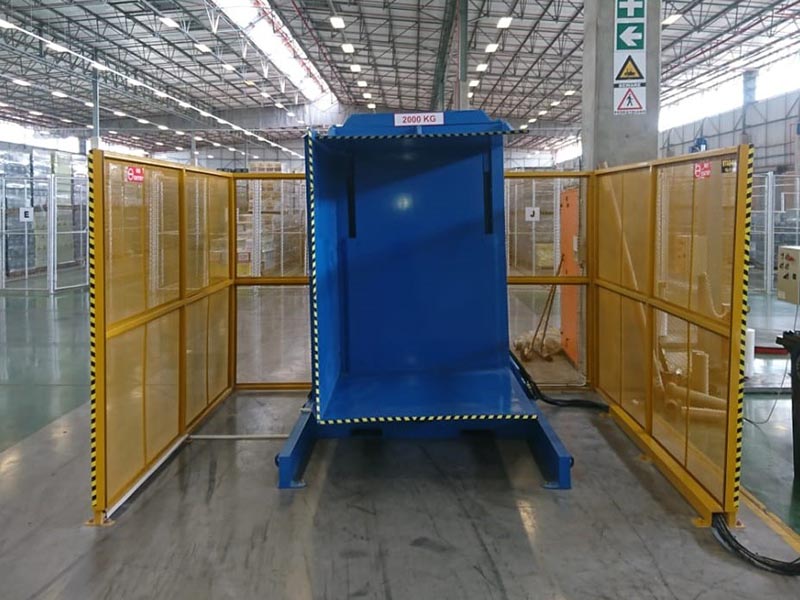
Dive Deeper: A Practical ROI Calculation
Let's move away from theory and build a sample ROI calculation. A proper analysis must look at both tangible savings (the hard numbers) and intangible gains (the strategic advantages).
Tangible, Hard-Cash Savings
These are the costs that you can see disappearing from your profit and loss statement.
- Labor Savings: This is the most obvious one. If you have two workers per shift, working two shifts a day, dedicated to manually swapping pallets, that's a significant labor cost. A pallet changer needs only one operator, and only for a few minutes at a time. You can reassign those other workers to roles that actually grow your business.
- Pallet Cost Savings: This is a huge factor that many overlook. Your internal, "house" pallets are built to last. They might be heavy-duty plastic or even metal, costing $50, $100, or more. You can't afford to let these leave your factory. But cheap, one-way wooden export pallets might only cost $15. If you ship thousands of pallets a year, the savings from not losing your expensive house pallets adds up incredibly fast.
- Product Damage Reduction: Manual handling of heavy products like steel coils or bundles of wire is risky. Products get dropped, scratched, or dented. A pallet changer handles the entire load smoothly and securely, minimizing the human element and dramatically reducing the rate of damage. For high-value goods, saving even 1% of your product from damage can mean tens of thousands of dollars.
Intangible Gains with Real Value
These benefits might not show up as a line item, but they directly impact your bottom line.
- Increased Throughput: As we discussed, faster loading means you can ship more product. How much is a 5% increase in annual shipments worth to your company?
- Worker Safety and Morale: Manual handling of heavy loads leads to back injuries and other workplace accidents. This increases your insurance premiums and hurts morale. A safer work environment is a more productive work environment.
Here is a sample ROI calculation to put it all together.
| Cost/Saving Area | Sample Annual Calculation | Estimated Value |
|---|---|---|
| Labor Savings | 2 workers x 16 hrs/day x 250 days x $15/hr wage | $120,000 |
| Pallet Cost Savings | 4,000 shipments/yr x ($75 house pallet - $15 export pallet) | $240,000 |
| Damage Reduction | 0.5% reduction on $20M shipped value | $100,000 |
| Total Annual Savings | $460,000 | |
| Estimated Machine Cost | (Varies by model and features) | ($100,000) |
| Payback Period | Machine Cost / Total Annual Savings | ~2.6 months |
Even with conservative estimates, the payback period is often less than a year. After that, the machine is a pure profit center for your factory.
How does a pallet changing machine fit into a digitally transformed, eco-friendly factory?
You are building the factory of the future. You're investing in a Manufacturing Execution System (MES) for total visibility and control. You're deploying IoT sensors to gather data. At the same time, you are facing increasing pressure from both government regulations and your customers to operate more sustainably. So you have to ask: does a relatively simple, mechanical piece of equipment like a pallet changer have a place in this high-tech, green vision? It's a valid question. The last thing you want is a piece of "dumb" equipment that operates in isolation, an island of inefficiency in your otherwise smart factory. A modern pallet changer is not that. It's designed to be a fully integrated part of your digital ecosystem and a key contributor to your environmental goals.
A modern pallet changing machine fits perfectly into a digitally transformed and eco-friendly factory. Digitally, it acts as a critical data point in your logistics chain, capable of full integration with your MES or WMS for automated workflows and complete product traceability. Environmentally, it directly contributes to sustainability by reducing product waste, enabling the use of recycled or sustainable pallets, and significantly lowering the energy consumption and carbon emissions associated with your shipping operations.
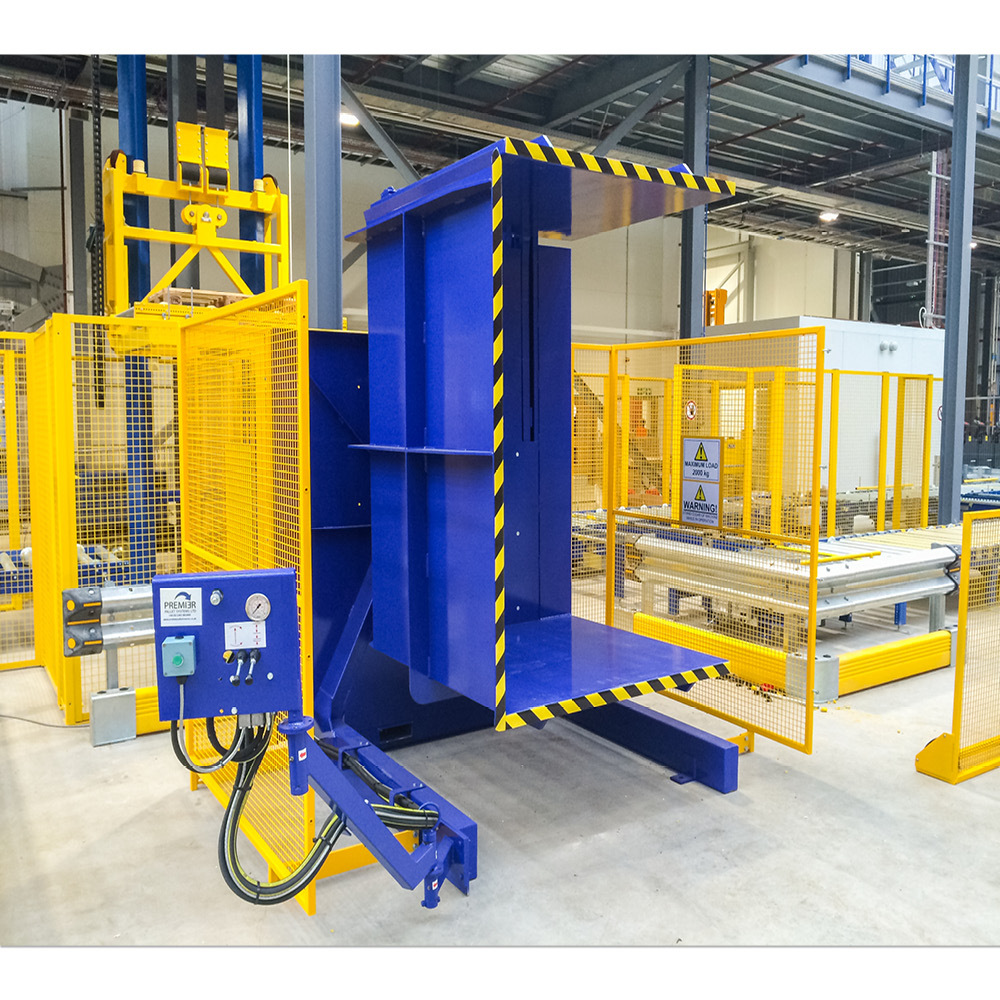
Dive Deeper: A Smart and Green Machine
Let's break down how this one machine can support your two most important strategic initiatives: digitalization and sustainability.
The Pallet Changer as a Smart, Connected Device
A pallet changer is no longer just a hydraulic press. Modern machines are built with intelligence.
- MES/WMS Integration: The machine's PLC (Programmable Logic Controller) can communicate directly with your factory's central brain. Your MES can send a command: "Order #5822 is ready. Transfer from plastic pallet type A to wooden pallet type C." The machine receives the command, executes the task, and sends a confirmation signal back to the MES. This creates a fully automated and traceable logistics loop.
- Data for Analytics: Onboard sensors can track everything: cycle times, load weights, motor current, and operating hours. This data can be fed into your analytics platform. It allows you to perform predictive maintenance ("Motor 3 is showing signs of stress, schedule a check-up") and to analyze your operational efficiency. This is the essence of a smart factory—turning operational actions into valuable data.
Direct Contributions to Your Environmental Goals
Your goal to reduce energy consumption and operate more sustainably is not separate from your goal to be more efficient. They are two sides of the same coin.
- Energy Reduction: Think of the energy consumed in the manual process. A forklift runs for 20-30 minutes, idling, lifting, and moving. Workers expend physical energy. In contrast, a pallet changer runs a highly efficient hydraulic or electric motor for just 90 seconds. The net energy savings per pallet is substantial. More importantly, by slashing truck waiting times at the loading dock from hours to minutes, you eliminate a massive source of fuel waste and carbon emissions from idling engines.
- Waste Reduction: Every product damaged during manual handling becomes scrap. It's wasted material, wasted energy, and wasted labor. By protecting your products, the pallet changer directly reduces your factory's waste output.
- Sustainable Materials: The machine gives you the flexibility to use any type of pallet. This allows you to easily incorporate pallets made from recycled plastics or sustainably sourced wood, helping you meet your corporate social responsibility goals.
| Feature | Digital Transformation Link | Eco-Friendly Impact |
|---|---|---|
| PLC & Connectivity | Integrates with MES/WMS for automated workflows. | Optimizes process, reduces overall energy use. |
| Onboard Sensors | Provides data for predictive maintenance & analytics. | Prevents breakdowns and damage, which create waste. |
| Automated Cycle | Creates a reliable, repeatable process. | Reduces truck idling time, lowering fuel/emissions. |
| Gentle Handling | Protects product integrity during transfer. | Drastically reduces product damage and material waste. |
| Pallet Flexibility | Can be programmed for different pallet types. | Enables easy use of recycled/sustainable pallets. |
A pallet changer is not an old-world machine. It is an enabler of the modern, smart, and sustainable factory you are building.
My Insights: Beyond the Machine - Choosing a Partner, Not Just a Supplier
I started my career as an engineer on the factory floor. I spent years troubleshooting machines, optimizing production lines, and learning what works and what doesn't in the real world. Later, when I built my own packing machine factory, I was the one making the tough capital investment decisions. I know the pressure you feel. You need more than just a piece of equipment; you need a solution that works, and you need to trust the people providing it.
This experience taught me the most important lesson in this industry: the machine is only 10% of the solution. The other 90% is the expertise, service, and relationship you have with the company that provides it. This is the fundamental difference between a simple supplier and a true strategic partner.
A supplier will sell you a pallet changer. They will send you a quote, ship you a box, and their job is done. A partner, on the other hand, starts by asking questions. They want to understand your entire operation. What is your product? What is its weight and fragility? What is your current warehouse layout? What are your bottlenecks? What are your goals for digitalization and sustainability? A partner understands that you are not buying a machine; you are buying an outcome. You are buying more warehouse space, faster exports, and lower operating costs.
At SHJLPACK, this "total solution" philosophy is the core of who we are. When a client like you comes to us, we don't just open a catalog. We start a conversation. We analyze your specific needs and help you choose the right machine—not the most expensive one, but the one that will deliver the best ROI for your unique situation. We help you plan its integration into your factory layout and your digital systems. We provide comprehensive training for your operators and a maintenance plan to ensure decades of reliable service.
My journey from employee to factory owner was possible because I had mentors and partners who shared their knowledge with me. They helped me succeed. Now, my mission with SHJLPACK is to do the same for others. We are a knowledge-sharing platform dedicated to helping you make the best decisions for your business. We want to be your partner, not just for one transaction, but for your entire journey of growth.
Conclusion
A pallet changer isn't just a machine. It's a strategic tool for unlocking growth, boosting efficiency, and future-proofing your factory's logistics.



